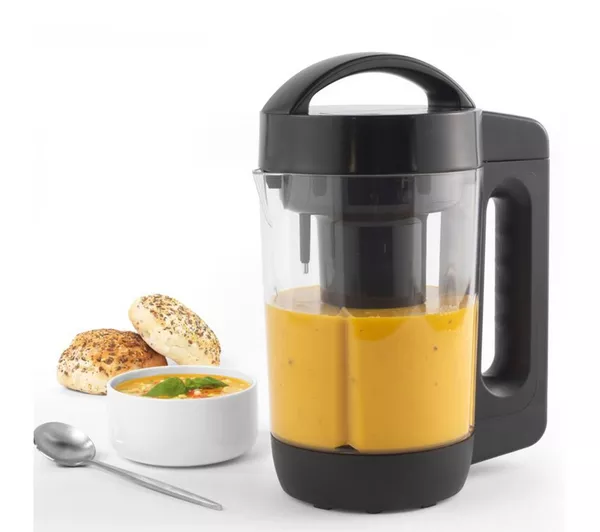Introduction of Soup Processor
The soup processor, a staple in modern kitchens, has undergone significant transformation to meet evolving consumer needs. Originally designed for convenience, this appliance has adapted over the years to offer enhanced functionality, versatility, and energy efficiency. Let’s explore how the soup processor has evolved to stay relevant in today’s culinary landscape.
Early Beginnings of Soup Processor
The journey of the soup processor began in the 1970s, a decade marked by a rising trend in convenience foods. Early models were designed to puree cooked vegetables and legumes, providing a quick solution for making smooth soups. These initial devices laid the groundwork for future advancements, reflecting a growing demand for easy-to-prepare meals.
Technological Advancements of Soup Processor
One of the most significant advancements in soup processor technology was the introduction of programmable settings. These features allowed users to select specific cooking programs for various soup recipes, ensuring consistency without manual adjustments. Alongside this, powerful motor systems were developed, enabling the processor to handle tougher ingredients like root vegetables and grains.
Versatility Expansion of Soup Processor
Another major development in soup makers was the addition of blending attachments. This innovation transformed the appliance from a single-purpose tool into a multifunctional kitchen device. Users could now chop vegetables, blend smoothies, and prepare a wide range of dishes, enhancing the overall utility of the soup processor.
Focus on Sustainability of Soup Processor
As consumers became more conscious of environmental impact, manufacturers began to prioritize energy efficiency and eco-friendliness. Modern soup makers now include energy-saving modes and are constructed from materials that reduce waste and extend product life. Some models even feature smart technology, allowing users to monitor and control their appliance via mobile apps for optimal energy use.
Catering to Dietary Preferences: Adaptations for Special Diets
The soup maker has also evolved to accommodate various dietary needs. With the rise in plant-based diets, newer models are designed to handle a diverse range of plant-based ingredients. Additionally, these processors now cater to gluten-free, dairy-free, and allergen-free diets, meeting the needs of a wide array of consumers.
The Future of Soup Processors: Continued Innovation
Looking forward, the soup maker’s future seems promising, with ongoing innovations aimed at further enhancing convenience, nutrition, and sustainability. As the demand for quick, nutritious meals grows, the soup processor will continue to play a vital role in modern kitchens, offering a practical solution for preparing a variety of delicious, homemade dishes.
Conclusion of Soup Processor
The evolution of the soup processor reflects its adaptability to changing consumer preferences and technological advancements. From its humble beginnings as a tool for pureeing vegetables, it has grown into a versatile appliance equipped with programmable settings, blending attachments, and energy-saving features. The modern soup processor remains an essential kitchen device, combining convenience and innovation to meet the diverse needs of today’s cooks.
Summary FAQ of Soup Processor
1.What is a soup maker?
A soup maker is a kitchen appliance designed to streamline the creation of soups. It can puree, blend, and cook ingredients, making it a versatile tool for preparing various dishes.
2.When did soup makers first appear?
Soup makers emerged in the 1970s, initially designed to quickly puree cooked vegetables and legumes for making smooth soups.
3.What are some key advancements in soup maker technology?
Key advancements include programmable settings for consistent results, powerful motors for handling tough ingredients, blending attachments for added versatility, and energy-saving modes for eco-friendliness.
4.How have soup makers adapted to modern dietary preferences?
Modern soup makers are designed to accommodate plant-based, gluten-free, dairy-free, and allergen-free diets, catering to a wide range of dietary needs.
5.What features do contemporary soup makers offer?
Contemporary models include programmable cooking programs, blending attachments, energy-saving modes, and smart technology for remote control and monitoring via mobile apps.
6.What is the future outlook for soup makers?
The future of soup maker looks promising, with continued innovations expected to enhance convenience, nutritional value, and sustainability in kitchen appliances.

